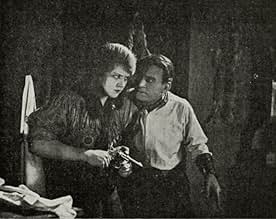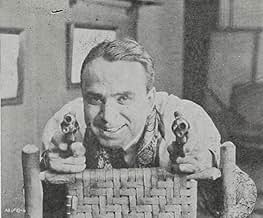Aggiungi una trama nella tua linguaThe civilized inhabitants of a formerly "wild" western town scramble to recreate the town's rough and rowdy heyday in order to indulge the fantasies of a rich newcomer.The civilized inhabitants of a formerly "wild" western town scramble to recreate the town's rough and rowdy heyday in order to indulge the fantasies of a rich newcomer.The civilized inhabitants of a formerly "wild" western town scramble to recreate the town's rough and rowdy heyday in order to indulge the fantasies of a rich newcomer.
- Premi
- 1 vittoria in totale
Sam De Grasse
- Steve Shelby - Indian Agent
- (as Sam de Grasse)
Monte Blue
- One of Wild Bill's Men
- (non citato nei titoli originali)
Walter Bytell
- Collis J. Hillington
- (non citato nei titoli originali)
Wharton James
- Lawyer
- (non citato nei titoli originali)
Bull Montana
- Bartender
- (non citato nei titoli originali)
Forrest Seabury
- Banker
- (non citato nei titoli originali)
Joseph Singleton
- Judson - Butler
- (non citato nei titoli originali)
Tom Wilson
- Casey - Engineer
- (non citato nei titoli originali)
Trama
Lo sapevi?
- ConnessioniEdited into Emozioni e risate (1961)
Recensione in evidenza
Before redirecting his career to swashbuckling adventure flicks with "The Mark of Zorro" in 1920, Douglas Fairbanks starred in modern comedies. He repeated the role of a modern mollycoddle or discontent yearning for adventure; in this film, "Wild and Woolly", he returns comically to his Western roots. He teamed with screenwriter Anita Loos, who pioneered the craft working for D.W. Griffith, and her husband director John Emerson to cement the first of Fairbanks's two popular incarnations. According to the print I saw, Victor Fleming ("The Wizard of Oz", "Gone with the Wind") is credited with photography here, and he worked on other Fairbanks vehicles, beginning his directorial career making them.
The presence of Loos is readily noticeable in the quantity of intertitles, which contributed much of the humor to Fairbanks vehicles, and thus redefined the role of title cards in silent films. In "Wild and Woolly", as elsewhere, they help to undercut the film by poking fun at itself and movies in general, such as in the scene where Fairbanks goes to a picture-play to have his dreams of the wild West come true--even in New York. The entire film plays around with the fact that movies romanticize bygone eras. The ending, too, jests at itself with the insertion of one intertitle.
The pacing is also a nice compliment to Fairbanks's restless, exuberant performance; the editing is as energetic and frantic as he is. It's congruity is also similar to Mack Sennett's Keystone comedies and, as William K. Everson ("American Silent Film") pointed out, is indicative of the fast pace of pictures post "The Birth of a Nation" (1915). Everson claimed that some shots in "Wild and Woolly" lasted no more than five frames. Additionally, Faribanks's acrobatics are perfectly suited to the genre, which he'd carry into his adventure spectacles. Today, Fairbanks remains one of the better-known silent film stars, but mostly for his swashbucklers. Yet, he should be recognized as an early American screen comedian alongside Sennett, Arbuckle, Chaplin, Keaton and Lloyd, as well, even though his films aren't slapstick and he couldn't be considered a clown of the same order. Like some of the films of Sennett, Chaplin and Keaton especially, "Wild and Woolly" is, however, a comedy that in reflecting itself finds much of its humor.
The presence of Loos is readily noticeable in the quantity of intertitles, which contributed much of the humor to Fairbanks vehicles, and thus redefined the role of title cards in silent films. In "Wild and Woolly", as elsewhere, they help to undercut the film by poking fun at itself and movies in general, such as in the scene where Fairbanks goes to a picture-play to have his dreams of the wild West come true--even in New York. The entire film plays around with the fact that movies romanticize bygone eras. The ending, too, jests at itself with the insertion of one intertitle.
The pacing is also a nice compliment to Fairbanks's restless, exuberant performance; the editing is as energetic and frantic as he is. It's congruity is also similar to Mack Sennett's Keystone comedies and, as William K. Everson ("American Silent Film") pointed out, is indicative of the fast pace of pictures post "The Birth of a Nation" (1915). Everson claimed that some shots in "Wild and Woolly" lasted no more than five frames. Additionally, Faribanks's acrobatics are perfectly suited to the genre, which he'd carry into his adventure spectacles. Today, Fairbanks remains one of the better-known silent film stars, but mostly for his swashbucklers. Yet, he should be recognized as an early American screen comedian alongside Sennett, Arbuckle, Chaplin, Keaton and Lloyd, as well, even though his films aren't slapstick and he couldn't be considered a clown of the same order. Like some of the films of Sennett, Chaplin and Keaton especially, "Wild and Woolly" is, however, a comedy that in reflecting itself finds much of its humor.
- Cineanalyst
- 8 lug 2005
- Permalink
I più visti
Accedi per valutare e creare un elenco di titoli salvati per ottenere consigli personalizzati
Dettagli
- Tempo di esecuzione1 ora 12 minuti
- Mix di suoni
- Proporzioni
- 1.33 : 1
Contribuisci a questa pagina
Suggerisci una modifica o aggiungi i contenuti mancanti

Divario superiore
By what name was Wild and Woolly (1917) officially released in Canada in English?
Rispondi

















